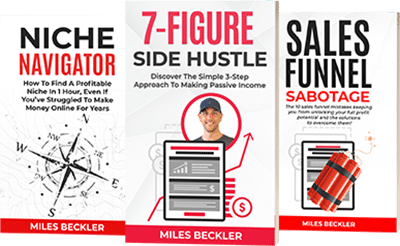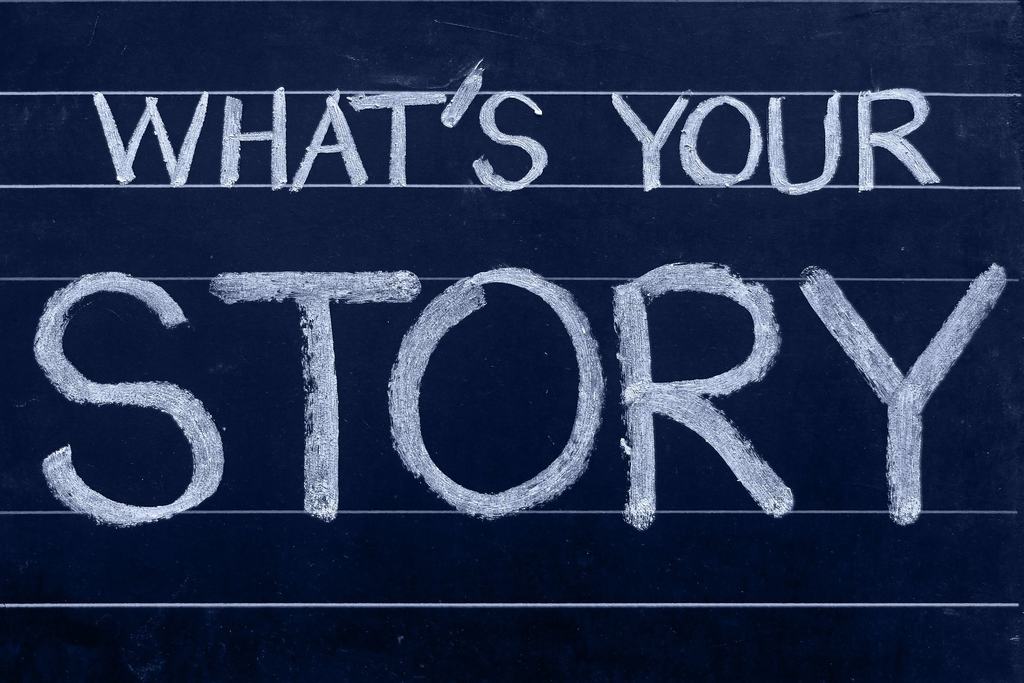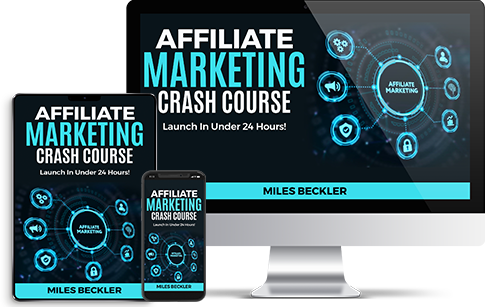If you’re trying to market your business online, then you have probably already been over opt-in forms, sales pages, and funnels. But if you haven’t been collecting emails or selling any products, then you may be frustrated with it.
I was in the same place at one point.
Back before I learned how to market my own business, my wife and I were broke. I had to move in with my wife’s parents just to keep from going under. I had to get two jobs, and sell my Jeep just to stay afloat.
It was a mess, and I was very frustrated. I felt completely lost.
But slowly, I started figuring out how to make SEO work for me. People started to hire me for my services. I was able to get out of the cramped, uncomfortable confines of the in-laws basement and move into a new place.
But this was not my end-game.
My wife and I had a dream. We wanted to teach people the joys and benefits of meditation, and turn it into a profitable business while also helping to change the world at the same time.
We were making money with our own website, but it wasn’t consistent. Some months would be great, but others would end up slow.
What was missing? I knew that we had to change something.
But what?
That is when I discovered the secret that revolutionized my business, and set me on the path toward complete independent financial freedom.
Storytelling!!!
When my wife and I learned how to weave storytelling into our content, our lives dramatically changed. Sales started popping off. Things got consistent.
It literally exploded!
But how does it work? And how do you do it?
I can tell you, but you’ll have to be patient and read this article, because I am going to tell you top storytelling tips every marketer should know.
And at the end, I’m going to reveal a dynamic secret that very few digital marketers know about. The secret to true, real, explosive growth in your own digital marketing business.
But before you’ll understand how to implement it, we have to go over the basics.
Let’s get to it.
Why is storytelling important?
The internet is saturated, information overwhelm is here.
Your audience's attention is more difficult to capture than ever.
We are facing a shift in the world right now. People are constantly bombarded by noise, and they’re starting to tune it out.
Storytelling is important because it captures and keeps attention fast. When you can capture your audience’s focus with storytelling, you can engage them in a way that will actually matter to them.
Think about it. People will completely ignore ads, but they will spend money to watch a blockbuster movie!
It’s time to adapt. And storytelling is the answer.
What is Storytelling, and What Does it Have to do With Marketing?
Storytelling should be woven into every piece of content you create. Your social media posts, blogs, videos, and emails should all contain elements of storytelling.
The biggest advantage to using storytelling is that it grabs audience attention.
The whole key here is that you want your audience to see your post/email/content as a story, NOT as an ad. That is the big difference.
Challenges You Face in Marketing Your Products or Your Service
Storytelling in marketing combines consumer science with the art of telling a story.
Before my wife and I understood this concept, our business had no consistent income.
The first tip in successful storytelling is to ask yourself this…
What story will resonate with my target audience on an emotional level?
Once you identify ‘your’ story, you can define it, craft it, fine-tune it, and weave it into everything you create.
For my wife and I, it only took one new sales page to turn everything around. We weaved our story into a single sales page, and that page took off so well and we still use it, to this day… 7 years later!
When you can dial in just one story, everything changes.
A Story Gives Your Audience an Emotional Experience
Why do you think storytelling works?
Because it connects with people’s emotions.
People act on their emotions. Consumer and marketing science knows this.
Feelings are intense, and they can inspire people to take action. If this feeling is strong enough, it will inspire people to buy a book, order a product, etc.
That’s what you want to inspire with your own story.
Enlighten and Inspire With Your Story
When we experience a story, we actually take on the beliefs of the hero of that story. A story that we connect with will enlighten, inspire, and educate us.
But most importantly, it will inspire us to take some kind of action… especially if there is a prompt of some kind telling us to do so.
Show Them That You Connect With Their Desires
So now, we come to a place where we define our objective with story-driven digital marketing.
This is the first vitally important concept that you must understand to make storytelling work for your business!
With every piece of content you create, you must engage the audience so that they literally see a movie playing out in their own mind as they consume your content!
You do this by sharing details, sharing your message, introducing characters, and weaving it all together in such a fashion that all of these elements evoke emotion in your readers.
And as with any great story, you need to have a few specific elements in place to do this.
You need…
- A desire to accomplish a visible goal
- Conflict
- Obstacles to overcome (large ones!)
- To RELATE to your audience!
You need to tell your story, but also relate to the audience in such a way that they will literally be able to put themselves into your story and feel emotions because of it.
They will think to themselves… “Wow, this is literally just like my story! I can relate to this!”
The Makeup of A Great Story
How do You Become a Good Storyteller? Introducing Michael Hauge
Michael Hauge is a behind-the-scenes storywriter in Hollywood.
He has worked with virtually everyone in the industry. Will Smith, in fact, described him like this…
“No one is better than Michael Hauge at finding what is most authentic in every moment of a story.”
Michael Hauge is the Hollywood king of storytelling. But years ago, he got together with Andre Chaperon (a huge name in digital marketing) for a webinar, and they blew the roof off the concept of story-driven digital marketing!
You can read about the happenstance chance of their connection here. If you want to get right to the bottom of how hundreds of the highest-grossing internet marketers have made HUNDREDS OF THOUSANDS OF DOLLARS in digital marketing, I highly recommend that you take a look at it!
But anyway, this webinar helped my wife and I to revolutionize our business. This was what taught us to use storytelling in our marketing… and it caused our business to literally EXPLODE with sales!
It was the magic element that we had always been missing. And in this article, I’m going to lay out the fundamental facts that you must understand to weave storytelling effectively into your funnels, emails, opt-in pages, and all other types of content.
Step 1… Create an Emotion
The first goal of any good story is to evoke emotion.
When we look at the challenges we face in marketing products and services, one of the biggest things we see is that it becomes predictable.
People generally say ‘here is my product, here is what it does, here is how it can help you, etc.’ That’s it. That’s the pitch. But this is just a description. There is actually no emotion being created here.
These straight facts and data-points may be important, but they are going to feel bland to your audience.
This is where storytelling can really help.
Show them how bad your experience was before the product, and then tell them how it revolutionized your life.
Step 2… Determine the Theme or Setup
A theme is simply a universal prescription for how we should live our lives.
So in your storyline, you want your hero to go through a certain positive transformation. You want your theme to be pretty universal and non-specific.
In other words... you don’t want your theme to be something like ‘opposition to nuclear war.’ That is very specific. Instead, think of something more ‘universal.’
Examples could include things like…
- Finding peace in your life
- Finding greater levels of success
- Living life on your own terms
When you determine what your theme is, you then take your hero through that process of transformation to show your readers what could happen for them if they were to undergo the same process.
You get them emotionally invested, and then you offer them a product or service that can help them to begin this journey.
Deep down, we all want to change. But if you offer something that will help, you can appeal to these emotions and offer something to help them, all at the same time.
Step 3… Talk about the Hero’s Journey
As you talk about your hero’s journey, you want to incorporate several different elements.
First, you talk about their life before their journey started. Their background, if you will.
What were their trials? What were their challenges? How did they feel about it?
Second, you want to talk about what your hero longs for.
What is the hero’s desire? What does he/she wish for? What is missing from their life that is prompting them to take action?
Then, you need to create empathy for your hero in your content. You need to get people to connect and identify with him/her emotionally.
There are, as a general rule, three ways to do this.
- Show how misfortune has afflicted the character to develop audience sympathy
- Put the character in jeopardy. Show the audience that, unless something changes, the hero is going to be in some kind of danger (a danger that your target audience will identify with)
- Make the hero likable. Show that they are a good person with a lot of inherent value and character
If possible, use all three of these to begin building the emotional story of the hero’s journey.
Of course, the goal here is to not just get your audience wrapped up in the story… but also to get them to think of themselves in a similar way.
You want them to think like this...
This hero reminds me of me! Maybe I need to do what this hero is doing! Maybe I should begin a journey like this!
Step 4… Present an Opportunity Faced by the Hero in the Story
After you have established your hero and worked to create audience empathy, you are going to need to bring in an opportunity.
This would be some kind of event that has never happened before.
In marketing, you would generally say that you ‘learned a secret,’‘took a course,’ or ‘met a mentor who changed your life,’ etc.
But the idea here is that opportunity arises, and the hero takes action!
This opportunity will almost always transition the hero into a new situation. There is adventure, discovery, and the tension of not knowing if this endeavor is actually going to work! There is also a finish line.
What’s at stake? What is the risk? Answering these questions will help to determine a finish line.
In marketing, you will generally word it kind of like this…
“I only had $80 in my pocket. My back was to the wall. The bills were piling up. Something had to change.
Then, I found the course. It was written by an expert who had made millions in his own business.
I decided that I was done being afraid. I borrowed the money from a friend and bought the course. I stayed up all night reading it. I was desperate to keep from losing everything. And what I discovered absolutely changed my life! I started making better sales. I started making more money.
But I wasn’t out of danger yet. If I didn’t come up with $10,000 for the mortgage, we were going to lose our house! So I doubled down. I kept studying the course and applying what I learned. That’s when I realized…”
As you can see, this is a lot more interesting than a description that says…
“Buy this course and learn how to increase your digital marketing profits!”
The first example draws you in and engages your emotions. The second one just describes what the product is.
Step 5… Narrate the Pursuit of a Goal
In this step, the hero/heroine takes action and strives to accomplish their goal.
And when it comes to storytelling in marketing, you want to do a few specific things with this.
First of all, you want the hero to save themselves. If someone else saves them, there is less of an impact.
Secondly, you want the achievement of the goal to be the end of the story. So you don’t want to end it prematurely.
You want to do whatever you can to elicit an emotional reaction in your audience first… and then close it out with a climax when they’re ready for it, and when you’re ready to pitch your offer.
Along the road to the hero pursuing the goal, don’t be afraid to add more conflict. You can also raise the stakes and introduce other bigger challenges! Conflict is what keeps your audience emotionally engaged.
But at the climax, remember that…
- The protagonist must be their own savior
- It must take work and effort for them to succeed
- Your audience can also conquer their obstacles, just as the hero did
You also want to develop your character as they move through the narrative. What kinds of inner challenges did they face? If you strip away their armor, who are they?
Make the protagonist human… someone who the audience can identify with.
Make room for creating valuable moments of clarity that the audience can identify with. Make this hero someone who represents them in their own life.
Then, you show them the offer… and suddenly, they realize that they can also beat their own challenges in life, just like the hero in your narrative beat theirs!
Bonus Tip - Reveal the Transformation
Revealing the transformation of your hero/heroine helps to solidify the emotional connection between that character and the audience.
The transformation, by definition, is the inner journey the character takes; from living in fear, to discovering who they really are, to living courageously and overcoming their demons, etc.
To help reveal the transformation from the standpoint of digital marketing, you want to make the hero’s character arc obvious to the readers. You can even state it like this…
“In just one year, I had gone from living in my basement, being afraid to try anything new… to overcoming my fear of failure. I bet everything on that course, and went for it. In the end, I was able to pay off my mortgage in just 6 months! But had it not been for this course, I would never have known what to do…”
You especially want to focus on the main transformative moments. These are the most motivational, and will have an awesome impact on your audience… IF you’ve done a good job of laying the groundwork and describing the hardships.
The Best StoryTelling Course Online
There are no qualms about it. This is the best storytelling course on the planet. This workshop, created by the famed Michael Hauge, will blow your mind!
It’s the Storyfluence Workshop with Michael Hauge.
This 12-unit course will teach you so much!
For example, I learned that there are 37 bullets your story needs to hit, how to mindmap your story, and these 4 questions that are the beginning of creating a story that resonates with your best customer.
StoryTelling Tips for Marketers - 4 Questions Your Story Needs to Answer
How do you want to change the life of your audience?
This is a question that you must be able to answer in your story-driven content.
Do you want your audience to…
- Gain more financial freedom?
- Make more money?
- Get healthier?
- Find more peace of mind?
- Create better connections with other people?
What problem does your product solve?
Your product helps to solve a problem. But what exactly is that problem?
Maybe the buyer doesn’t earn enough. Maybe they can’t find a date. Maybe they’ve been having trouble marketing their business. Maybe they can’t figure out how to lose that weight they’ve been wanting to lose.
What desire does it fulfill?
The hero of your story will have a desire that he/she wants to fulfill.
Successful storytelling tip:
Make sure that this desire aligns with the desires of your audience.
In other words… if you are selling a weight loss supplement, make sure that you communicate the intense desire your hero/heroine has to lose extra weight.
What action do I want my audience to take?
This final question is, perhaps, the most important storytelling tip of all.
But it will be much easier to get your audience to take action if you’ve done a great job on everything else leading up to this point.
What action do you want your audience to take?
Do you want them to buy your product? Do you want them to sign up for your newsletter?
This is where they are offered the opportunity to begin their own success story. And if you can get them emotionally involved through effective storytelling from the beginning… this last part falls into place.
Conclusion
You may not realize it right now… but you absolutely have the power to take your digital marketing business to explosive new levels.
It may take practice, and you will absolutely want to get into the Storyfluence Workshop with Michael Hauge to find out exactly how to do it.
But the simple truth is that ads and typical sales pitches don’t work anymore. There is a shift happening… and it is taking us towards real value, not noisy, gimmicky advertisements.
If you can do what I did, and learn how to incorporate this into your work… you will doubtlessly reap HUGE rewards from it!
Feel free to comment and ask me any questions you may have! I always love helping people out. Let me know what you think!








